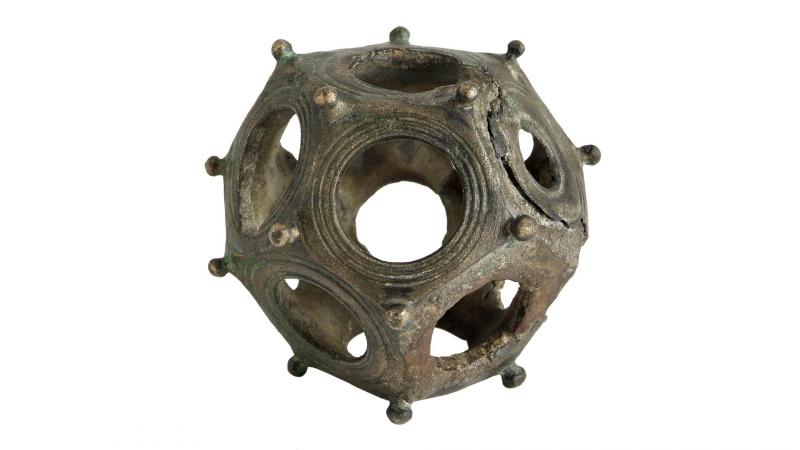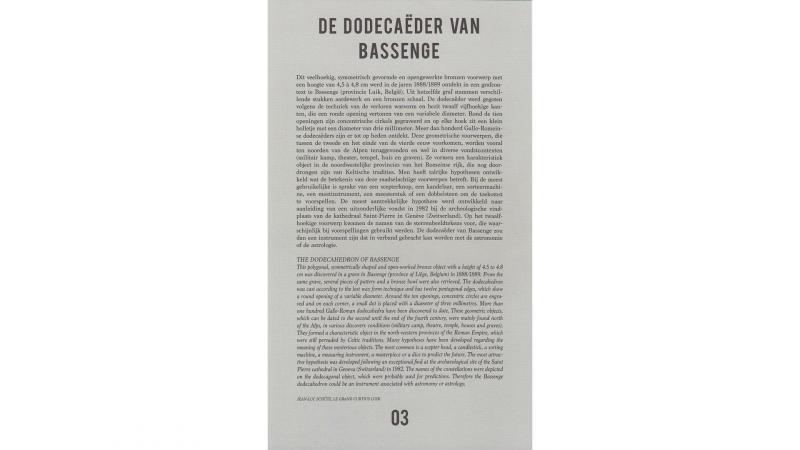This is one of those ancient artefacts whose use is perplexing. This is the case for this regular twelve-sided polyhedron – called a dodecahedron – which was found in a grave discovered during excavations at Bassenge in 1888 and 1889. The pentagonal faces of the artefact are all pierced with a circular hole with a variable diameter; each angle is adorned with a small ball.
Many hypotheses have been put forward regarding the function of the dodecahedra: sceptre heads, candlesticks, calibrators, tools for measuring distance, masterpieces, dice used to predict the future, etc. The most enticing hypothesis, which is supported by the discovery of a dodecahedral dice made of silver lead, with engraved faces with the names of the zodiac, in Geneva (Switzerland), would suggest that this mysterious artefact was used for divination games. In Roman times, this type of instrument was not common, as only a hundred copper alloy dodecahedra are known to us; these were mainly unearthed north of the Alps.

